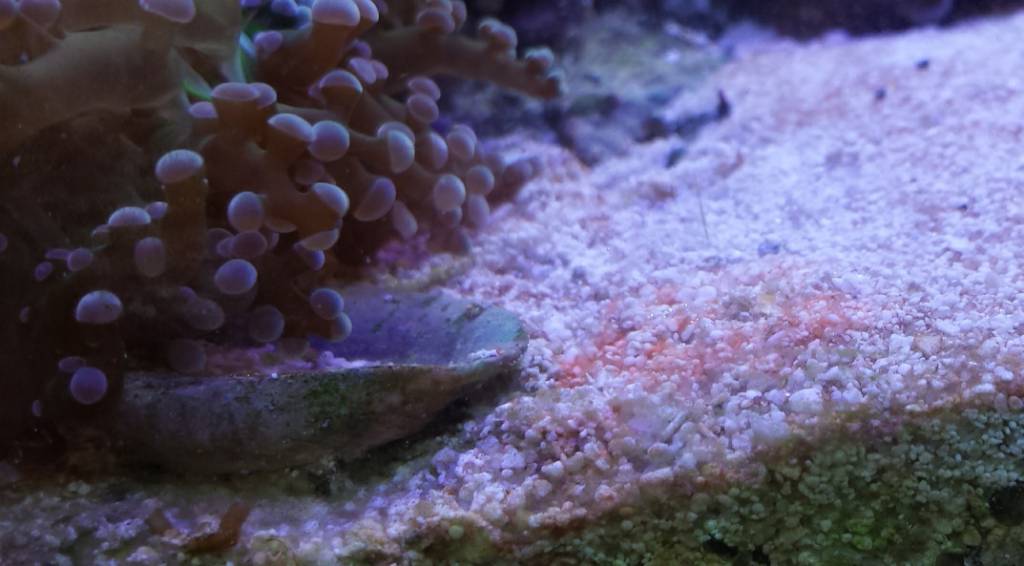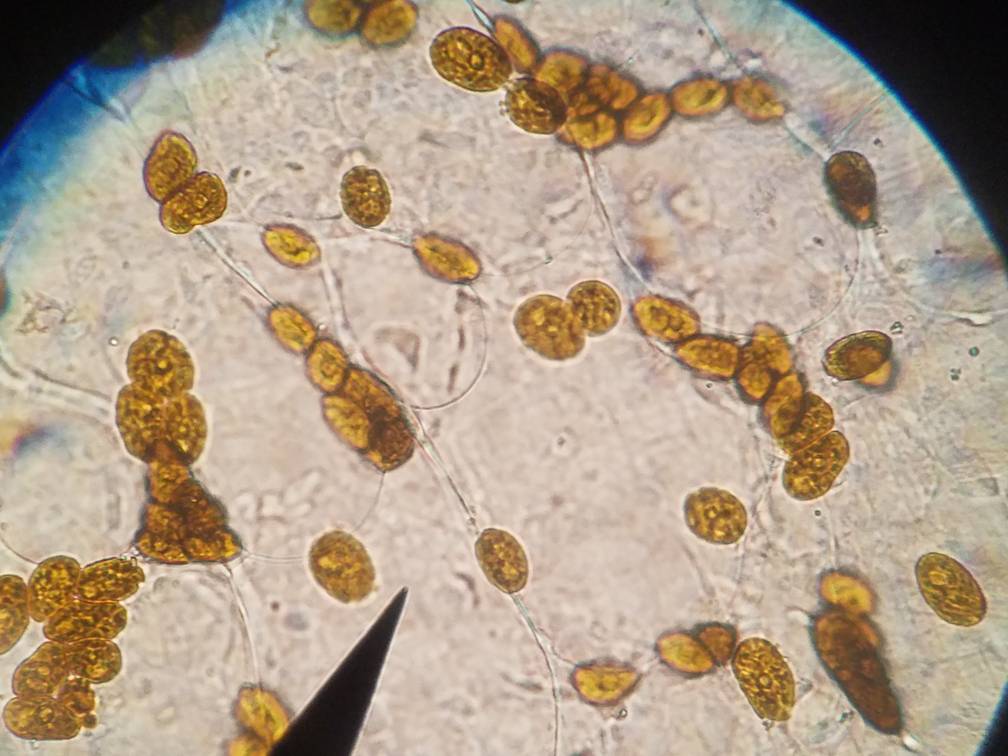Navigation
Install the app
How to install the app on iOS
Follow along with the video below to see how to install our site as a web app on your home screen.
Note: This feature may not be available in some browsers.
More options
You are using an out of date browser. It may not display this or other websites correctly.
You should upgrade or use an alternative browser.
You should upgrade or use an alternative browser.
A Spectrophotometer view of Photosynthetic Organisms in our Tanks
- Thread starter taricha
- Start date
- Tagged users None
- Joined
- Sep 18, 2017
- Messages
- 5,627
- Reaction score
- 3,458
I'm just the messenger...A quote from that paper:
>>In Chlorella, energy transfer from PSII to PSI appears to play an important role in balancing excitation between PSII and PSI.<<
Really?
. All samples examined showed prominent distribution of delayed fluorescence in PSII and PSI, which suggests that a certain amount of PSII attaches to PSI to share excitation energy in red algae. The energy transfer from PSII to PSI was found to be dominant when the amount of phycoerythrobilin was increased.
https://www.sciencedirect.com/science/article/pii/S000527281100065X
My initial take on that sentence I quoted was that electrons flow from PSII to PSI. Well, yes.
- Joined
- May 22, 2016
- Messages
- 6,581
- Reaction score
- 10,166
Odd little tid bit to go w/ this................
https://www.britannica.com/science/algae/Photosynthesis-and-light-absorbing-pigments
Related:
https://www.sciencedaily.com/releases/2014/09/140926085816.htm
Don't think either really "apply' here though..
Hopefully the second link about cryptomonas will apply to the thread. I've had them in my sand before. Slightly redder than cyano, until you hit them with peroxide. Then they turn highlighter pink.

- Joined
- May 22, 2016
- Messages
- 6,581
- Reaction score
- 10,166
Extracting zoox pigments from a few different corals. Been doing softies, as it's fairly easy to squeeze a few drops out and be reasonably free from interference from the host coral.
Thus far all the pigment profiles have been quite similar. My favorite part is that even a photosynthetic flatworm (Waminoa) that has symbiodinium dinoflagellates and a few amphidinium has an indistinguishable profile from the rest of the soft corals.

Compared to the large variations from pigments of the other classes (faded lines) these differences are very small and mostly just test inconsistencies. See differences in the two samples from same cabbage leather. Slight shifts in the location of the left peak indicate minor differences in ratios of Chl A, C, and carotenoids extracted.
The consistency gives me some confidence in what I should expect and that I'll be able to spot something weird if I run across it in a sample from a hard coral.
Thus far all the pigment profiles have been quite similar. My favorite part is that even a photosynthetic flatworm (Waminoa) that has symbiodinium dinoflagellates and a few amphidinium has an indistinguishable profile from the rest of the soft corals.
Compared to the large variations from pigments of the other classes (faded lines) these differences are very small and mostly just test inconsistencies. See differences in the two samples from same cabbage leather. Slight shifts in the location of the left peak indicate minor differences in ratios of Chl A, C, and carotenoids extracted.
The consistency gives me some confidence in what I should expect and that I'll be able to spot something weird if I run across it in a sample from a hard coral.
I'm surprised the red cyanobacterium strongly absorbs red light since it reflects it.Extracting zoox pigments from a few different corals. Been doing softies, as it's fairly easy to squeeze a few drops out and be reasonably free from interference from the host coral.
Thus far all the pigment profiles have been quite similar. My favorite part is that even a photosynthetic flatworm (Waminoa) that has symbiodinium dinoflagellates and a few amphidinium has an indistinguishable profile from the rest of the soft corals.

Compared to the large variations from pigments of the other classes (faded lines) these differences are very small and mostly just test inconsistencies. See differences in the two samples from same cabbage leather. Slight shifts in the location of the left peak indicate minor differences in ratios of Chl A, C, and carotenoids extracted.
The consistency gives me some confidence in what I should expect and that I'll be able to spot something weird if I run across it in a sample from a hard coral.
- Joined
- Sep 18, 2017
- Messages
- 5,627
- Reaction score
- 3,458
Just for fun, let's compare the light absorption and action spectrum of zooxanthellae. An 'action spectrum' demonstrates the response (such as oxygen production) of a photosynthetic organism to wavelength (using a monochromator which splits full spectrum light into narrow bandwidths.)

These works don't address clades but do look at photoadaptation:Anyone got any reading material on possible pigment differences (or a lack of) between zooxanthellae clades?
Titlyanov, E.A. and Y.Y. Latypov, 1991. Light dependence in scleractinian distribution in the sublittoral zone of South China Sea islands. Coral Reefs 10:133-138.
Titlyanov, E.A., 1981. Adaptation of reef-building corals to low light intensity. Proc. 4th Int. Coral reef Symp., Manila. 2:39-43.
Titlyanov, E.A., M.G. Shaposhnikova and V.I. Zvalinskii, 1980. Photosynthesis and adaptation of corals to irradiance. I. Contents and native state of photosynthetic pigments in symbiotic microalga. Photosynthetica 14 (3):413-421.
Titlyanov, E., T. Titlyanova, K. Yamazato and R. van Woesik, 2001. Photoacclimation dynamics of the coral Stylophora pistillata to low and extremely low light. J. Exp. Mar. Biol. And Ecol., 263 (2): 211 – 225. (Abstract).
- Joined
- May 22, 2016
- Messages
- 6,581
- Reaction score
- 10,166
I'm surprised the red cyanobacterium strongly absorbs red light since it reflects it.
The acetone is misleading, especially with cyano, because it doesn't get the phycobilins (phycoerythrin, phycocyanin) that determine the color and absorption profile.
It's also misleading for me to call them "green" "red" they are both brown under neutral light. The "green" is very brown, and the "red" is reddish brown.
I didn't have enough red cyano in my tank to get a sample of the raw absorption from the cells. So above I have "red" and "green" in 90% acetone, and "green" mashed up raw. The prominent absorption in the middle of the spectrum in the raw sample is the phycobilins.
The raw sample can be compared with the graphic from the 3rd link in @oreo5457 post above
- Joined
- May 22, 2016
- Messages
- 6,581
- Reaction score
- 10,166
Just for fun, let's compare the light absorption and action spectrum of zooxanthellae. An 'action spectrum' demonstrates the response (such as oxygen production) of a photosynthetic organism to wavelength (using a monochromator which splits full spectrum light into narrow bandwidths.)
awesome. Dana, any thoughts on what's going on in the green with the relative decrease 515-530 or relative increase 535-550nm? I thought photoprotection from carotenoids but their absorption cuts off further blue than that.
Another thought: this is right at the location of green fluorescence (lyndby 2016 has a nice graphic) but I don't see how fluorescence at that wavelength would suppress zoox production there.
Again, good work! I suspect the increase of oxygen production seen in the action spectrum at ~550nm is due to chromatic adaptation of the cultured zooxanthellae - likely due to an increase in the peridinin/chlorophyll pool. I looked at the Lyndby graphic ('g') and the reflectance spectral signature is that of Hochberg's 'brown' coral (as opposed to his other category - 'blue' coral.) Fluorescence apparently had little, if any, impact on the reflectance.
awesome. Dana, any thoughts on what's going on in the green with the relative decrease 515-530 or relative increase 535-550nm? I thought photoprotection from carotenoids but their absorption cuts off further blue than that.
Another thought: this is right at the location of green fluorescence (lyndby 2016 has a nice graphic) but I don't see how fluorescence at that wavelength would suppress zoox production there.
Another, if late, thought. The differences could *possibly* be due to the photoadaptive capability of the zooxanthellae clade. I'm unsure if LaJeunesse or Smith are still looking at zoox DNA. Might be some clues there, but my attention has been elsewhere for quite a while.
awesome. Dana, any thoughts on what's going on in the green with the relative decrease 515-530 or relative increase 535-550nm? I thought photoprotection from carotenoids but their absorption cuts off further blue than that.
Another thought: this is right at the location of green fluorescence (lyndby 2016 has a nice graphic) but I don't see how fluorescence at that wavelength would suppress zoox production there.
- Joined
- May 22, 2016
- Messages
- 6,581
- Reaction score
- 10,166
That action spectrum data is from within favia coral tissue? or is it zoox isolated out of the tissue in culture? I tried to hunt down source, but I didn't have luck.Another, if late, thought. The differences could *possibly* be due to the photoadaptive capability of the zooxanthellae clade. I'm unsure if LaJeunesse or Smith are still looking at zoox DNA. Might be some clues there, but my attention has been elsewhere for quite a while.
On the clade idea - forgive this digression. I looked at the flatworm tissue under the scope, and found no symbiodinium at all - only amphidinium. (Pic)
This genus has a few symbiotic species, but mostly free living and they show up as pest dinoflagellates in people's tanks.
Interesting for two reasons.
One, I was hoping to get some pest dino spectral data anyway and this is at least close.
Two, the flatworm absorption was near identical to the other zoox samples from corals I took even though it's not symbiodinium at all. So I'll be increasingly surprised if/when we find a symbiodinium clade in corals whose absorption doesn't look much like the rest.

I've got to find that paper - the primary's name started with an 'H' but he is not in my data base. If I recall correctly, the zoox were isolated from the Favia host. I'll also list all zoox photopigments as described Jeffrey. She died five years ago and I treasure the conversations I had with her.
- Joined
- May 22, 2016
- Messages
- 6,581
- Reaction score
- 10,166
Thanks so much! Is it Halldal?I've got to find that paper - the primary's name started with an 'H' but he is not in my data base. If I recall correctly, the zoox were isolated from the Favia host. I'll also list all zoox photopigments as described Jeffrey. She died five years ago and I treasure the conversations I had with her.
Yes! I copy and paste references from my Word document into articles. I must have cut it accidentally. Thanks for refreshing my fading memory!Thanks so much! Is it Halldal?
Is it possible to roughly translate pigment composition percentages to action spectra? When you look at the pigment concentrations in this study. It would appear that the action spectra would be very different between the acro and brain corals.Just for fun, let's compare the light absorption and action spectrum of zooxanthellae. An 'action spectrum' demonstrates the response (such as oxygen production) of a photosynthetic organism to wavelength (using a monochromator which splits full spectrum light into narrow bandwidths.)

Thanks for sharing that paper - very interesting. I'm busy today, but will study it as soon as I can. Particularly interested in examining photopigments v. zoox clades. Fascinating.Is it possible to roughly translate pigment composition percentages to action spectra? When you look at the pigment concentrations in this study. It would appear that the action spectra would be very different between the acro and brain corals.
Similar threads
- Replies
- 3
- Views
- 453
New Posts
-
-
-
Powerheads Drygoods Mp10 controller and power supply
- Latest: Mr. GoodStuff
-



















